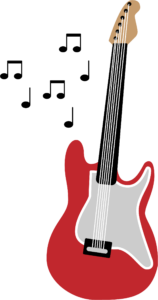This past Sunday, April 2, I went to the annual Punk Rock Flea Market in Philadelphia for the first time. The event space of the 23rd Street Armory, a historic stone building that resembles a castle, was packed with vendors and shoppers. In fact, it was so packed that it was difficult to walk at times, but despite the intense foot traffic I was able to get a look at most of what the market had to offer. I even ate the best vegan burger I have ever had, courtesy of the Algorithm Vegan Grill food truck.
Homemade art and decorations abounded, along with tote bags, books, jewelry, toys and zines. I was on the hunt, however, for records and band shirts, and there were plenty of those. At a vintage clothing vendor in the back corner of the room a particular shirt caught my attention: a 7 Seconds shirt for the album “Walk Together, Rock Together.” It featured an illustration of the band playing live that was a bit difficult to discern with dark purple on black fabric, but awesome nonetheless. New versions of the shirt are currently being sold in yellow and green, but I had never seen one with purple graphics.
7 Seconds is a band that took me some time to come around to, but the record that I eventually connected with was “Walk Together, Rock Together” and it’s still my favorite of their material. Suffice it to say, I really wanted that shirt emblazoned with the record’s title. It was hanging on the wall separate from the racks, so I figured it was special. Perhaps it was an original from 1985 or a rare color variant. I knew the shirt would be pricey, but I was still shocked to turn over the tag and read $300. As someone with little interest in fashion or knowledge of the market for vintage clothes, I was perplexed by it.
So how did expensive vintage band t-shirts become so popular among clothing aficionados? It’s useful to think of these shirts not simply as band merchandise but as artifacts of bygone decades. Band shirts capture their era in both age and style just like any item of old clothing. There’s also an appeal in a shirt having previous owners, carrying the legacy of its wearers as well as the band it features. To buy something second hand is to contribute to an existing fashion tradition while seemingly being a more ethical consumer.
This is why even bootleg shirts, called “original bootlegs,” are valuable in the world of vintage clothing. Despite not being authorized by the bands, bootlegs shirts were made at the same time and therefore have historical significance. Their designs can be just as desirable, and because they were made in even less quantities than the official merchandise they are more rare, contributing to their value.
However, historical significance does not just mean that the older it is the more valuable. A major aspect of vintage t-shirt desirability is nostalgia. While the classification of what makes an item vintage can vary slightly, it is generally understood to be anything at least 20 years old. That gives shirts from the very early 2000s and ‘90s vintage status, and that’s exactly what’s hot at the moment. Buyers — especially those in Gen Z — are seeking out t-shirts from bands whose heydays were during those decades. Whether they associate the music itself with those eras is irrelevant, as it’s the shirt’s distinctly dated yet trendy style that gives it appeal.
It is this combination of nostalgia, second-hand allure and some downright cool designs which have made the vintage band t-shirt trend reach new heights in recent years. A prime example of this is that Kirby Fisher, the founder of vintage clothing store Dead Union, was able to pay for a vacation to Sri Lanka by simply selling a Sub-Pop era Nirvana shirt.
The young generation of vintage buyers and sellers have also increased the demand, and thus the price for band t-shirts has increased even among online resale sites like Depop, where thrifting has dominated. Depop is notorious for the practice of sellers buying mass amounts of clothing for cheap at thrift stores and then reselling them for extremely marked up prices. The influx of online sellers makes it difficult to determine what a vintage t-shirt’s true value is. There is now a large amount of vintage shirts for sale at widely different costs as sellers set their own prices, sometimes purposely inflating values in order to sway the going rate higher. In the vintage band t-shirt world there is more demand, more sellers, more buyers, and more products — all creating an inconsistent but increasingly more expensive price point.
So was that $300 7 Seconds shirt an obscene price? Or, was it a result of its true market value and historical worth? From my perspective as a music fan and not a vintage fashion enthusiast it’s hard to tell. The conundrum with pricey shirts becomes trying to convert one’s appreciation for a band to a monetary value and how much one cares about the vintage status. But if the vintage band t-shirt trend is like any other fashion trend, it will eventually become passé. When that happens, fans will still be buying new shirts directly from their favorite artists and wearing their appreciation for the music on their sleeve — and maybe splurging on a vintage tee if the right design and the right price come along.
For questions/comments about this story email the.whit.arts@gmail.com or tweet @TheWhitOnline.






